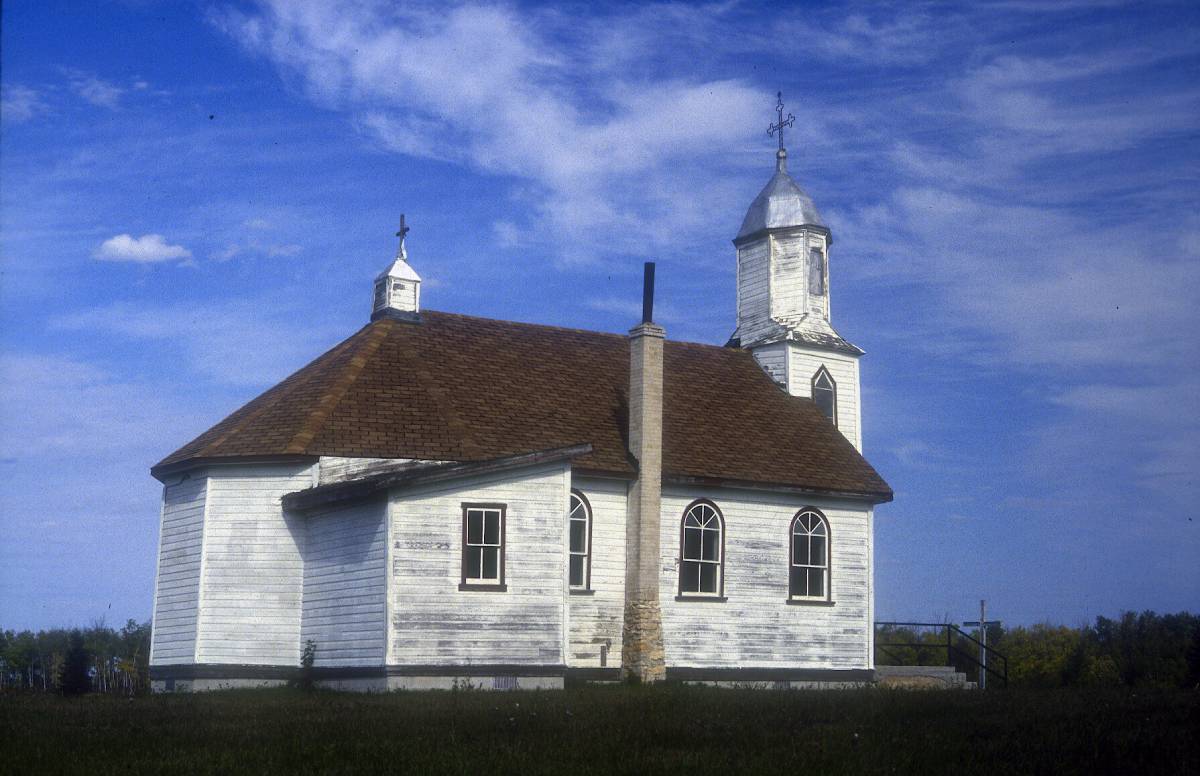Municipal Heritage Site
Inwood is a community southwest of Gimli. The Post Office opened as Cossette in 1906 and changed to Inwood in the same year. Inwood is a contraction of “in the wood,” a reference to its setting. The name of the School District was Cossette, named after Leon Cossette, an early settler.
This church is northwest of Komarno on Polson Road off PTH 7. Before Inwood was changed to Polson in 1910, to match with the School District, the church was known as “the church in Inwood.” It was also known as Polson Church, Holy Cross Greek Catholic Church, and Church of the Exaltation of the Holy Cross. It is the first and only church of the parish.
Founders of the parish were Ivan Hradowy, Peter Holowaty, Peter Hrycyk, Ivan Harasymchuk, Paul Kibzey, Kost Makiychuk and S. Medvid.
The church was built in 1915 by Ivan Harasymchuk and Semen Masyk. on extensive grounds in the centre of the settlement. This modest wood frame building with painted exterior and interior walls and sitting on a concrete foundation cost $1,500.
In 1916 the church was visited by Bishop Nykyta Budka. On September 27, 1972, and again on September 1, 1974, it was visited by Metropolitan Maxim Hermaniuk.
This church is typical of the type of religious building erected by the early settlers. The nave is 15 x 6 m (50 x 22 ft) under a gable roof. The basic rectangular massing has a three-tiered square tower centred on the east facade. The two lower tiers have pyramidal roofs. The top tier is octagonal. It is surmounted by a metal-sheathed dome with a Latin cross. A Greek cross sits on the smaller metal-covered dome at the junction of the apse and main roof. There are three windows on each side of the nave, the upper portions being of stained glass.
Inside, a wooden partition with three doorways separates the nave from the sanctuary, resembling the Royal and Deacon’s doors of an iconostasis. Between the archways are glass-mounted prints of the “Blessed Virgin Mary” and “Jesus Christ, Lover of Mankind.” Behind the main altar is a painting on wood of the church patron. The artist is unknown.
The church was included in the Canadian Register of Historic Places on January 30, 2008. However, it has been designated for demolition and may no longer exist.
• Photographed in 1991.
• Published in Senior Scope, October 10. 2020.

